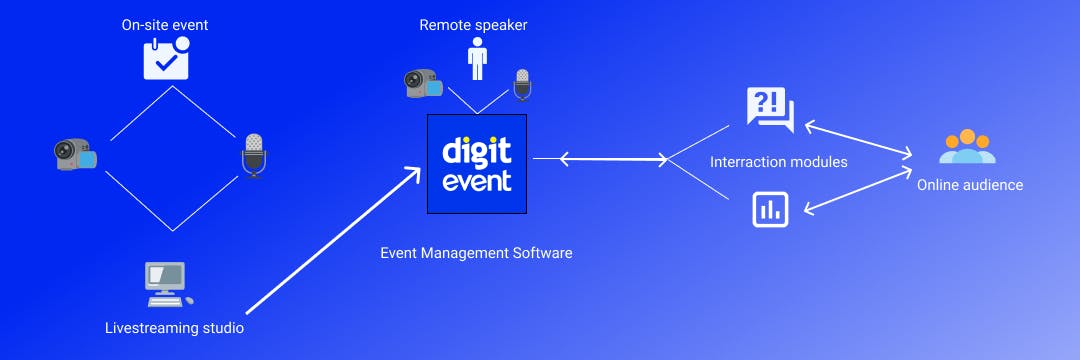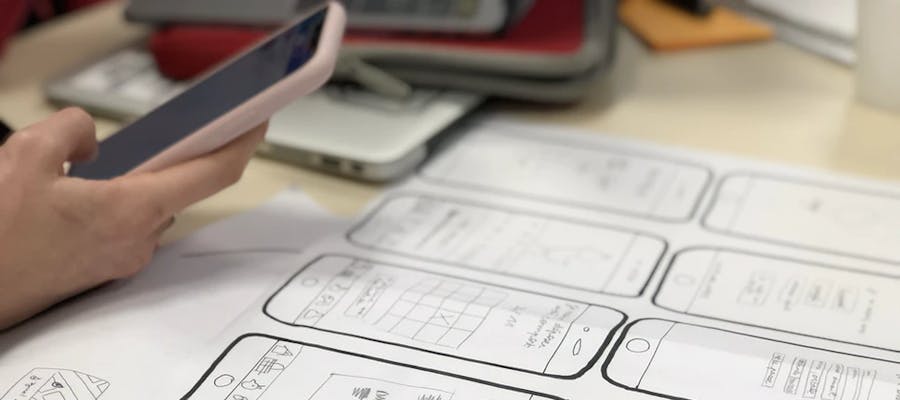Hybrid events demand versatility and a more rigorous organizational approach than other formats. With an additional technical layer (transmission of the event) as well as an additional layer of interaction for the virtual audience, this type of event is quite complex to execute.
A good hybrid event is meant to create a three-way exchange: your speakers should interact with your face-to-face audience, but also with your online audience.
We will therefore try to introduce you to the technology behind hybrid events:
🦾Understand hybrid event technology at a glance
Here is a simplified diagram of the different information flows on a hybrid event managed by Digitevent.

How the video and audio signal is transmitted
Globally, while your event is taking place, a camera crew will record and broadcast what is happening on the floor at the same time. To do this, a cameraman and a soundman will film and record a video and an audio signal.
These two signals are sent to an encoder (often a fixed computer or a fairly powerful laptop) which will compile this data to produce a video stream (with added sound). The provider responsible for this service is called the streaming provider. Its role is to output a clean video stream and send it to the internet (through the on-site connection if it is sufficient, or through its own internet connection).
When this signal is sent, it arrives on the streaming platform (YouTube Live, Twitch, or directly on Digitevent). The platform can then broadcast the live stream while collecting messages from guests through live interaction modules. These solutions (whether Digitevent or another) have servers large enough to host and stream the video to thousands of participants simultaneously.
Problems that may arise once the signal is transmitted
If you have one or more remote speakers, and the best possible connection and computers, there is always a chance that the internet connection of a speaker fails, there is not much you can do to improve the quality of the image (from his webcam) and sound.
And even if the incident is out of your control, attendees will not forget, the slightest grain of sand can tarnish the participant experience and impression. To prevent these external risks, test the speaker's equipment and make sure there is no risk. Always have a plan B and different scenarios so that you can easily "plan for the unexpected".
We hope that these tips will help you to better understand the technology and different stakeholders that make a hybrid event possible! :)




